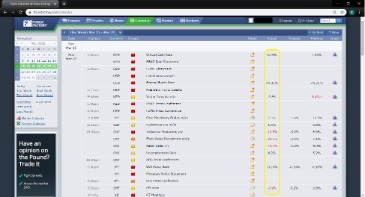
Chart patterns usually occur when the cost of an asset goes towards a direction that a common shape, like a rectangle,… Usually, the target is reached much later for an upside breakout than for a downside breakout. Hello All,
I have made this video which covers briefly on following points for Auto-Chart-Patterns-Ultimate-Trendoscope
1. Info about trading different patterns included
I could not cover alerts in the video due to time constraints. Price action reverses direction from the first resistance (1) and goes upwards till it finds the first support (2), which will be the highest high in the pattern.
- We’ll also highlight where you need to enter a position and at what price level you should place a stop-loss order and a take-profit target.
- The pattern indicates that the bullish momentum is exhausting.
- WINS STOCK MARKET DOWNTURN
NO WINNER TONIGHT STOCK MARKET SEVERE DOWNTURN
BECAUSE STOCK MARKET DOES NOT LIKE UNCERTAINTY. - The potential support breakout can signal a powerful trend reversal.
- Traditionally, a regular descending triangle pattern is considered to be a bearish chart pattern.
Typically, the descending triangle is more powerful when traded in the context of a trend. It’s also more powerful when traded in the direction of the prevailing trend. As you can see in the GBP/JPY 5-minute chart below, the market is in a downward trend. However, at some point during the trend, prices have consolidated, creating descending highs and a lower support trend line. A steeper downward slope reflects increased bearish momentum and typically leads to a stronger breakdown. The support trendline broke and SBUX declined further after the breakdown.
Contents
How Do You Trade the Descending Triangle Pattern?
The names of these patterns suit their shapes as their upper and lower trend lines connect at the apex on the right side to form a corner. As noted above, the upper trendline connects the highs, while the lower trendline links the lows. So most of the time it’s better to wait until the pattern is complete before making any trading decisions. As you can see on this chart, a descending triangle mirrors its counterpart and has one sloping and one horizontal trend line. But with descending triangles, the sloping side is the resistance line. This pattern shows that it is the bears who keep advancing on the bulls, who, from their end, can’t seem to offer adequate support to counteract the impending resistance.
The endpoint of this vertical line is the level where one should close the winning trade. Traders tend to use a downside breakout from a descending triangle pattern as good reason to hit the sell button. This is a quick update analysis about some of altcoins which have a good potential to grow and produce a possible huge profit in the near future. History is repeating itself is the most suitable quotes on MATIC here. We can see a similar pattern with previous structure in this huge up trend channel.
DocuSign: Is There a Reason Not to Buy? Here’s What Traders Can … – RealMoney
DocuSign: Is There a Reason Not to Buy? Here’s What Traders Can ….
Posted: Fri, 08 Sep 2023 16:00:00 GMT [source]
We research technical analysis patterns so you know exactly what works well for your favorite markets. By learning about triangle formations, you have acquired a crucial tool for your successful trading journey. To successfully recognize these patterns, practice daily and test them in a practice account before using real money.
A symmetrical triangle is a chart formation where the slope of the price’s highs and the slope of the price’s lows converge together to a point where it looks like a triangle. This contrasts with descending triangle formations that occur when price lows are consistent, with price highs increasingly lower. A descending triangle bearish pattern built with only two highs and two lows is generally considered less reliable than one with more highs and lows. Here’s a big downside of the descending triangle … Shorts could get caught in a short squeeze if there’s a reversal.
How to trade the Descending Triangle pattern?
They can either be continuation or reversal patterns, depending on whether they occur in an uptrend or a downtrend. According to popular opinion, a descending triangle has historically been seen as a bearish pattern as it emerges during a market downtrend. In this case, it is known as a reversal pattern, which we covered above. Once bears take over, the descending triangle takes place as the market consolidates. During consolidation, a downward-inclined trend line can be drawn to connect the lower highs.
- As with many chart patterns, the descending triangle has specific entry and exit rules.
- Therefore, a trader could consider a surge in volumes and a sell signal of the MACD indicator to open a position earlier during the breakout candle formation (1).
- Thereafter, the descending triangle appears as the forex candlesticks start to consolidate.
It is a very popular chart pattern because it clearly shows that the demand for an asset or commodity is weakening. Traders can combine price techniques, like the moving average, and chart patterns with technical indicators. In this strategy, traders use the descending triangle pattern to anticipate potential breakouts, and the moving average indicators trigger the signal to initiate a trade. This strategy anticipates a breakout from the descending triangle pattern and uses a combination of trading volumes and asserting the trend to capture short-term profits. When a stock is in a downtrend or a consolidation phase, traders watch for lower highs and lower lows being formed. Even though the descending triangle pattern and the falling wedge pattern have similar formations, they are different in meaning and outcome.
Descending Triangle Trading: Example
This pattern emerges when volume declines and new stock price highs are limited. The trading period begins when the descending triangle reversal pattern is revealed ahead of the breakout. In this trading guide, you will learn how to trade the descending triangle pattern like a seasoned professional.
Tezos Price Prediction: Will XTZ Make-or-Break From This Pattern? – The Coin Republic
Tezos Price Prediction: Will XTZ Make-or-Break From This Pattern?.
Posted: Thu, 07 Sep 2023 23:03:00 GMT [source]
The descending triangle pattern is a technical analysis chart pattern characterized by a flat support level and a descending upper trendline connecting lower highs. The pattern indicates a potential trend continuation or reversal and is completed when the price breaks below the lower trendline with high volume. The descending triangle pattern suggests a likely bearish trend, indicating that sellers may be gaining control of the market. By recognizing this pattern, traders can position themselves to profit from a possible breakdown in price. As a forex trader, you can use the descending triangle pattern to identify bearish trends and capitalize on potential opportunities. To spot this pattern, search for a triangle shape that consists of support, resistance and a descending trendline.
Descending Triangle Pattern – Best Reversal Triangle (
A breakout is when a stock’s price moves out of the established triangle pattern. Breaking out implies pressure has been generated that could indicate the price will continue to persist in the same direction as the breakout. Traders can monitor alerts that notify them of changes in direction, for example, potentially revealing a new top or bottom. The trader might then take this new information and verify if the price chart resembles a descending triangle. Here are some tips to help you recognize the descending triangle pattern.
This can be used as an initial signal to prepare for long positions in anticipation of a breakout. However, this textbook pattern seldom occurs in the real markets. In most cases, a descending triangle pattern can also see a sloping base as well. Instead of a https://g-markets.net/ flat support level, you can see higher lows being formed. The descending triangle pattern is a type of chart pattern often used by technicians in price action trading. The pattern usually forms at the end of a downtrend or after a correction to the downtrend.
Trading with triangle patterns: key points to remember
In this scenario, the buyers lost the battle and the price proceeded to dive! You can see that the drop was approximately the same distance as the height of the triangle formation. Sometimes the resistance level is too strong, and there is simply not enough buying power to push it through. They keep putting pressure on that resistance level and as a result, a breakout is bound to happen.

Ultimately, each trader decides what confidence they attach to the signal and whether further data (i.e. additional analysis tools) is needed to support a position. Descending triangle patterns, therefore, offer insight into the likely direction of a stock, not an exact prediction. To find your price target, take the thickest portion of the triangle and subtract it from the breakout point. While straight lines are used to trace the highs and lows, most likely, if the line truly followed the actual price peaks and troughs, it would be bumpy.
Conclusion – Descending Triangle Chart Pattern
In the end, the bears usually break the support line, signaling the end and confirmation of the triangle and the continuation of the previous downtrend. Instead, we could potentially witness a reversal of a long-term downward price trend. As the name suggests, the descending triangle pattern breakout strategy is very how to trade descending triangle simple. It involves an anticipation of a breakout from the descending triangle pattern. This strategy uses a very simple combination of trading volumes and asserting the trend, which can be used to capture short term profits. Contrary to popular opinion, a descending triangle can be either bearish or bullish.

Leave a Reply